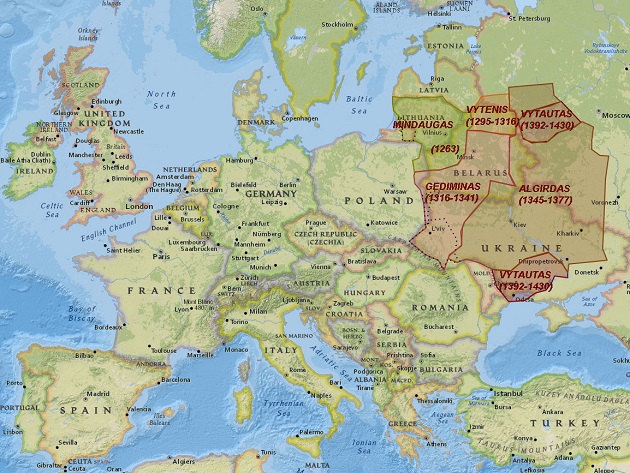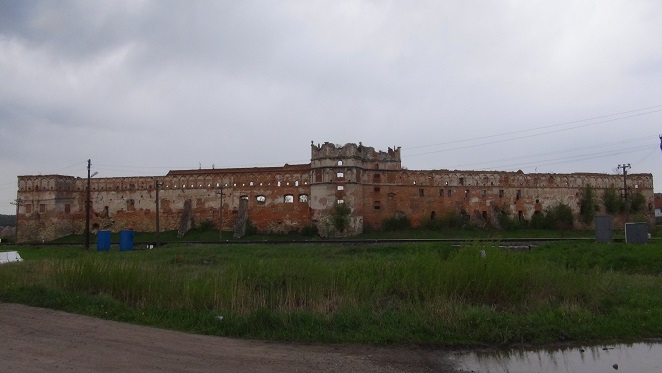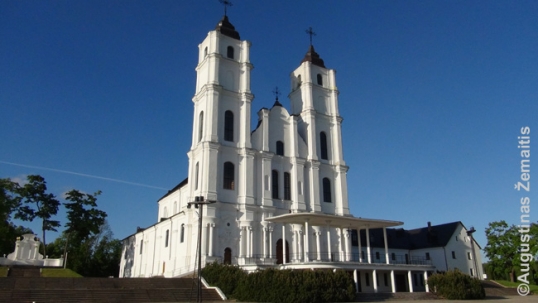Grand Duchy of Lithuania castles abroad
Lithuania may be small today, but during the 15th century Grand Duchy of Lithuania was Europe‘s largest country. It controlled not only the territories of today‘s Lithuania but also those of today‘s Belarus, most of today‘s Ukraine, parts of today‘s Poland, Latvia, Russia, and Moldova. It ranged from the Baltic Sea to the Black Sea.

Establishment and expansion of the Grand Duchy of Lithuania, superimposed on modern European state boundaries. The areas enclosed by black dotted lines indicates regions both acquired and lost before 1430. ©Augustinas Žemaitis.
In all this area, the Grand Duchy left lots of heritage behind.

Lutsk castle in Ukraine. ©Augustinas Žemaitis.
The most impressive one is undoubtedly the Lithuanian castles. Some of them are UNESCO World Heritage sites and some of the top tourist sites in Belarus and Ukraine. Some of them have been rebuilt, e.g. ones in Mir and Nesvizh (Belarus) and Lutsk (Ukraine). Others lay in romantic ruins.

Staroselo castle in Ukraine lay in ruins. ©Augustinas Žemaitis.
Another type of the Grand Duchy of Lithuania heritage is its palaces. Both castles and palaces often housed the local rulers. However, castles were built for defense, with small windows and military garrisons. Palaces, on the other hand, were larger and opulent, with large windows and built primary thinking about luxury rather than about defense. In fact, both castles and palaces are versions of the same, and which one was built depended on time. In the 14th century, for example, wars were still common and so safety was important for the leadership, opting for castles. Later, however, increased safety led to the conversion of many castles into palaces.

Opulent courtyard of Nesvizh (Nesvyžius) palace in Belarus. ©Augustinas Žemaitis.
While some of the palaces were owned and used by non-Lithuanian families, others housed ethnically Lithuanian families sent in from Lithuania-proper.
Religious buildings of the era (especially churches) also often survive. While religious buildings often have less distinctive elements or histories showing them as Lithuanian in particular, there are some elements of designs peculiar to the Grand Duchy of Lithuania. For the Catholic churches, it is the so-called Vilnius Baroque style with two tall and slender towers. For Muslim Tatar mosques, it is a unique wooden minaret-less design.

Vilnius Baroque style church in Aglona, Latvia
In Belarus, the Lithuanian castles and palaces are often undoubtedly Lithuanian, as there, Grand Duchy of Lithuania has been in power from the 13th until the 18th century and so most of the castles and palaces were built and always used by the Grand Duchy of Lithuania alone.

Myrius (Mir) castle in Belarus. ©Augustinas Žemaitis.
In Ukraine, on the other hand, Lithuanian rule was shorter (14th to 16th centuries), moreover, parts of Ukraine were pretty developed before Lithuania (Kievan Rus), and, the Poles, who controlled Ukraine after Lithuania, also rebuilt or reconstructed some of the Lithuanian castles and palaces. There, therefore, it is sometimes more difficult to say that a particular castle is Lithuanian (as it was built over numerous periods of different rules). However, Lithuanian additions are often clearly visible. In the case of the Lithuanian palaces, even after Lithuania lost control of Ukraine in the 16th century, these palaces continued to be owned by Lithuanian noble families.

Castle of Kamenets-Podilskiy in Ukraine. Here, Grand Duchy of Lithuania ruled only for a part of its history and thus only parts of the castle date to the Grand Duchy. ©Augustinas Žemaitis.
Article by ©Augustinas Žemaitis.





